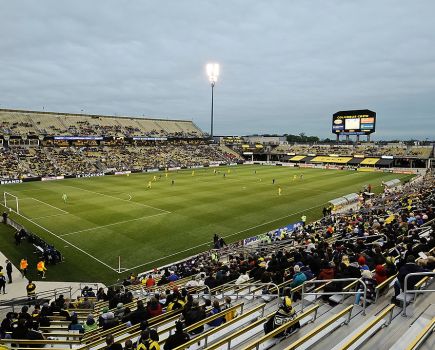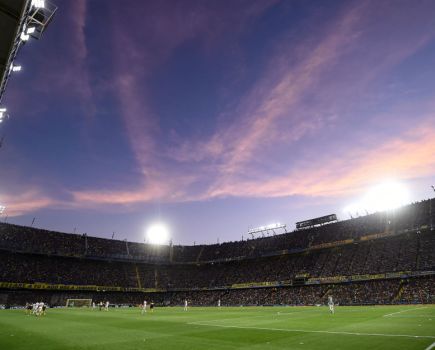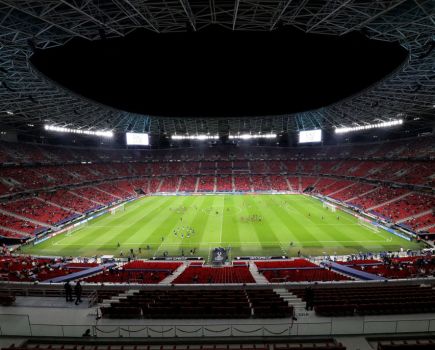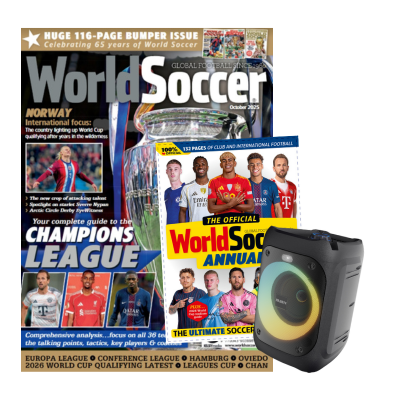Marseille
 Winner in 2010 and runners-up to lille last year Marseille is regenerated and resurgent since the tainted days of Bernard Tapie 18 years ago, and there has never been a better time to visit the de facto capital of the French south.
Winner in 2010 and runners-up to lille last year Marseille is regenerated and resurgent since the tainted days of Bernard Tapie 18 years ago, and there has never been a better time to visit the de facto capital of the French south.
The city is a real melting pot, as personified by its flagship club and the tens of thousands of supporters who dream of a return to those glory days when l’OM dominated the domestic league and, in 1993, became the only French club to win the European Cup.
Fans and staff have always reflected the ethnic mix here. Founded by Phocaean Greeks in 600BC – making it the oldest city in the country – Marseille’s position at the mouth of the Rhone, overlooking the Mediterranean, saw it welcome Italian, Spanish and Armenian communities, along with those from north and west Africa.
Formed in 1899, l’OM were pioneers of the game, competing in the first French amateur and professional leagues, and became something of a specialist cup side as they won six trophies between the wars.
By the late 1930s l’OM were playing at the impressive Stade Velodrome and had uncovered their first hero: Larbi Ben Barek, “the Black Pearl”.
An orphan, Barek grew up in poverty in Morocco. Playing for US Marocaine, he came to the attention of the many European teams who played friendlies in the north African country and he set up a goal with a stunning pass in the first minute of his first match on his arrival at Marseille. Within months he was playing for France.
As war approached he played under Casablanca-bred Argentinian coach Helenio Herrera at Stade Francais in Paris before returning to Marseille to play for a second spell until 1956.
The club hit the doldrums until Marcel Leclerc took over as president in 1965, and he brought in top stars from the 1970 World Cup such as Brazil’s Jairzinho and Roger Magnusson of Sweden. The club flourished and did the double for the first time in its history in 1972.
Tapie followed Leclerc’s lead and, following his arrival in 1986, the club scaled unprecedented heights in the French game – and plunged to new depths.
With stars such as Fabien Barthez, Marcel Desailly, Didier Deschamps and Alen Boksic, l’OM won four titles in a row, lost out on the 1991 European Cup Final on penalties to Red Star Belgrade, and then beat Milan 1-0 with a Basile Boli header to win Europe’s premier trophy in 1993.
The celebrating back home around the Old Port was legendary, with France having at last won the trophy it gave the world. However, a few days later a domestic match-fixing scandal broke when it was discovered that Valenciennes had been persuaded to take it easy in a league game against l’OM. Tapie was jailed and the club were stripped of the 1993 league title and their top-flight status.
Thanks to the goals of Tony Cascarino, and the support of their loyal following, the club clawed their way out of the second division. With a new owner, Adidas boss Robert Louis-Dreyfus, they attracted big stars back to the Velodrome and, in 1996, top-flight status was achieved. With Laurent Blanc in sublime form, l’OM claimed runners-up spots in the league and UEFA Cup in 1999, when the team froze in Moscow and allowed Parma an easy 3-0 win.
Three relatively lean years followed, until a title chase in 2002-03. With a rigid defence featuring quality Belgian centre-back Daniel Van Buyten, former Chelsea defender Frank Leboeuf and young Manuel Dos Santos, l’OM pushed Lyon and Monaco to the wire. More European appearances followed, including another appearance in the UEFA Cup Final, this time losing to Valencia in 2004.
Despite losing on penalties to Sochaux in the 2007 French Cup Final, Marseille qualified for the Champions League and beat Liverpool at Anfield in the group stage. By now, experienced Belgian coach Eric Gerets had taken over and things were moving again at the Velodrome. With average league gates of over 52,000 – the highest in the country – l’OM finished third in 2007-08.
Former favourite
In 2009-10, with Kinshasa-born goalkeeper Steve Mandanda ever present, Senegal striker Mamadou Niang scoring the goals and Algeria’s Karim Ziani pulling the strings in midfield, l’OM overtook Lyon, finishing six points ahead of the seven-times champions, only to lose out to Bordeaux – who were coached by former Marseille favourite Blanc.
As the season went down to the wire, Gerets announced his intention to leave this summer and his decision made way for the return of Tapie-era hero Deschamps – a Champions League winner as a player with Juventus as well as Marseille.
Deschamps, who also captained France to victory at the 1998 World Cup, coached Monaco to the Final of the Champions League Final in 2004. Can he have similar success with l’OM?
Soccer stadium
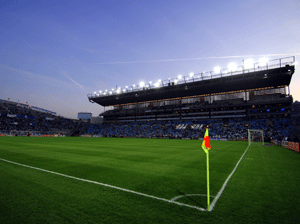 No arena in France can provide the kind of atmosphere generated at the 60,000-capacity Stade Velodrome which, backdropped by the hills of Provence, has all the kind of fireworks you’d only expect in Spain, Italy or Greece.
No arena in France can provide the kind of atmosphere generated at the 60,000-capacity Stade Velodrome which, backdropped by the hills of Provence, has all the kind of fireworks you’d only expect in Spain, Italy or Greece.Survival Guide
Arrival & Transport
 Marseille-Provence airport is 15miles north west of town and linked by regular buses (journey time 25 minutes, €8.50). A taxi costs about €40. It takes three hours from Paris by train and the main station, Saint-Charles, is a short walk from La Canebiere. A two-line metro system is complemented by buses and trams.
Marseille-Provence airport is 15miles north west of town and linked by regular buses (journey time 25 minutes, €8.50). A taxi costs about €40. It takes three hours from Paris by train and the main station, Saint-Charles, is a short walk from La Canebiere. A two-line metro system is complemented by buses and trams.
Hotels and Information
The Office Du Tourisme (4 La Canebiere, +33 4 91 13 89 00) can book accommodation. The opulent Le Petit Nice-Passedat (Anise de Maldorme, corniche JF-Kennedy, +33 4 91 59 25 92, €300) offers a pool, top-notch restaurant and superb views. Mid range, the Hotel Alize (35 Quai des Belges, +33 4 91 33 66 97, €85) has little rooms overlooking the Old Port, beside the OM Cafe. The nearby Hotel Relax (4 Rue Corneille, +33 4 91 33 15 87, €60) is cheaper still.
Eating and drinking
The landmark OM Cafe (3 Quai des Belges, +33 4 91 33 80 33) is covered in photographs of l’OM history and does food with a harbour view. It also doubles as a match-ticket office. The Bar des Allees (45 Allees Leon Gambetta) is another fans’ venue and there, as in most places, you can expect to pay €2-€3 for a small beer.
Daytime Entertainment
The heart of the city is the Old Port, a 15minute walk from Saint-Charles station. The Notre-Dame de la Garde basilica offers unbeatable views of sea and city. On the other side of the Old Port, Cathedrale de la Major is the largest cathedral built in France since the Middle Ages.
Match Day
Getting off at Rond point du Prado on line 2 of the metro, the ground is surrounded by bars such as the Brasserie Michelet (Boulevard Michelet 123). The Museum-Shop (Mon-Sat 10am-1pm, 2pm-6pm) combines a souvenir shop with a quirky mini museum. Along with the usual shirts, flags and pennants, you can see Chris Waddle’s shirt and a squeezed, empty packet of Belga cigarettes as favoured by European Cup-winning manager Raymond Goethals. OM fans gather behind each goal on the Virages Nord and Sud, where it’s impossible to get a ticket. For a seat in the Jean Bouin or Ganay stands, buy in advance from here or here. Expect to pay around €50 for a league game.



